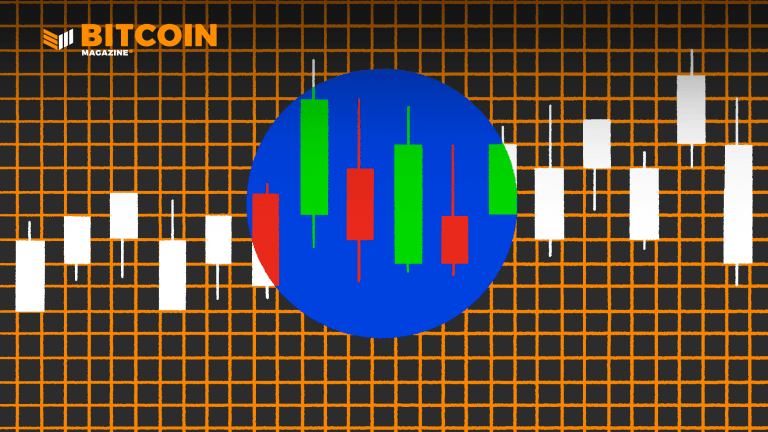As the price of bitcoin continues on its sideways journey, it’s helpful to consider this volatility compared to previous episodes.
This is an opinion editorial by Francois Moreau, a fintech writer and financial risk analyst based out of Paris.
The Fed’s interest rate spikes are spooking the market, and speculative assets like bitcoin are amongst the hardest hit. Although once-touted as a non-correlative asset compared to equity markets, bitcoin’s beta is ultimately well past one as it falls at a rate nearly twice that of the struggling stock market.
But, recently, it appears that the coin is stagnating below $20,000. In this apparent consolidation, some fear that it may simply be butting up against a previous support floor and that any additional bad bitcoin news will cause a further drop.
Some are more confident in the coin.
According to them, this consolidation is a strong sign of a bottom, and the support making bitcoin range-bound is a sign of a strong future. Whether the coin will shoot back up to close to its previous all-time-high of nearly $70,000 remains to be seen – but some are cautiously optimistic.
Gathering Statistics
According to the crypto research giant Kaiko, the volatility of the $201B cryptocurrency market fell below standard market benchmarks. This is a harbinger of solid consolidation, even as a stronger US currency and more attractive fixed-income assets distract investors.
In fact, for some, that bitcoin stability is the best news of the year.
Luno exchange head Vijay Ayyar reinforced the thesis that consolidation is an indicator of future stability or moves upward rather than further crashing, saying that “Bitcoin has largely been range bound between $18-25K for four months now, indicating consolidation and a probable bottoming out pattern, given we are seeing the Dollar Index top out as well.”
Calling the bottom (or the top) is as much art as science, with a healthy dose of luck needed, but Ayyar relies on past trends to make his assessments: “We’ve seen BTC bottom when DXY has topped in the past, as in 2015, so we could be witnessing a very similar pattern again.”
Others in the industry agree; Antoni Trenchev of the lending firm Nexo says that the consolidation and reduced volatility are “strong evidence that the digital assets industry has matured and is becoming less fragmented.”
Has Spring Sprung?
As the rest of the equities market fell by “only” around 20%, bitcoin dropped by a multiple of that, losing nearly $2 trillion in net value and falling by over 50% just this year. It has dropped almost 70% compared to its $68,543 peak in November 2021. This fall was devastating to the class of investors who saw bitcoin as a hedge or means of diversification in a portfolio, as the coin proved substantially correlated with stocks.
As we’ve said, and you’ve undoubtedly heard parroted endlessly since October 2021, that fall is mainly due to the Federal Reserve’s attempts to tamp down inflation. Those attempts have proven to be largely insubstantial thus far, requiring a further rate increase of 75 BPS at a time with no end.
Compounding the correlation issue was that many large institutional crypto bulls built heavily leveraged positions they were then forced to unwind to avoid margin calls, ultimately driving the price down further as the assets were sold for relative scraps.
Some call this nuclear fallout in the crypto sphere, aptly, a crypto winter. Some, like Three Arrows Capital, even lost their entire firm as they unwound too slowly — the firm lost more than $3B of investor money before collapsing.
Going back to Ayyar, the stability indicates an “accumulation period.” That accumulation may indicate a willingness to tentatively return to bitcoin for funds, firms and investors, as the modeling shows the $20,000 range undervalued.
“The fact that bitcoin is trapped in such a range makes it boring, but this is also the point at which retail investors lose interest, and smart money begins to amass,” Ayyar said.
Not only that, but many family offices are expanding their crypto holdings as they, too, seek diversification and increasingly move towards alternative investments for clients. Digital asset management fund president Matteo Dante Perruccio reinforced this trend by pointing to a “counterintuitive spike in demand” from big money and smart money. This could be a move towards diversification or, just as likely, seeking substantial upside as they think the bottom is in.
Bitcoin miners, too, have reduced their crypto sales. As this happens, selling pressure also falls, another harbinger of positive movement in the coin’s future and the mining industry at large. Analysts from Goldman Sachs say that publicly traded bitcoin miners sold around 3,000 bitcoins in September compared to 12,000 in June.
Back to Perruccio: he predicts that the crypto winter will break in Q2 of 2023. “For the market to advance,” he said, “we’ll have seen a lot more failures in the DeFi [decentralized finance] arena and a lot of the smaller firms.”
Even financial service providers haven’t abandoned crypto.
Joining the trend, Mastercard just rolled out options for banks that enable crypto trading alongside traditional accounts. Also, Visa is collaborating with the FTX exchange to bring debit cards to market that direct links to trading accounts and help users ensure cash flow as they speculate, spend, and manage the transition from cash to crypto (and vice versa).
Fed Watch
Head of Crypto Research at the alternative asset management company CoinShares James Butterfill is a bit more cautious, reminding investors that it’s difficult to make too many predictions before more information and data come out. “We err on the side of higher upside possibilities rather than further price declines,” he said.
“The largest fund withdrawals recently have been in short-bitcoin positions, whereas we have seen tiny but consistent inflows into long bitcoin over the last six weeks,” he said to CNBC via email. He later added, “A statement from the Federal Reserve that it intends to ease its aggressive tightening would be the major factor driving uptake of bitcoin.”
The Fed is expected to continue the 75 BPS incremental hikes. Still, some also see a pivot on the horizon back to the days of easy (or easier) money: “Clients are telling us that they will start increasing positions to bitcoin once the Fed pivots, or is close to it,” Butterfill said. “The recent liquidations of net shorts are consistent with what we observe in terms of money flows and suggest that short sellers are starting to give in.”
Conclusion
So what’s the bottom line? Unfortunately, the future is impossible to predict, and we can only manage expectations in line with past trends, data, and our thesis about the coin. For bullish investors, though, the recent reduction in volatility is a good sign indeed – and institutions appear to agree.
Addendum – FTX And Its Dramatic Effect On The Crypto Capital Market
Sometimes you speak too soon, and in the case of Bitcoin’s reduced volatility, unforeseen circumstances are forcing the metaphorical groundhog back into his hole for another extended period of crypto winter.
Midway through the month, the cryptocurrency exchange FTX, previously the third largest and seen as broadly beyond reproach, collapsed in a spectacular mess of financial mismanagement and tabloid-style personal intrigue.
While the latter is undoubtedly good for gossip fodder, the crux of what happened and how it will affect Bitcoin moving forward lay in the former. In short, the appearance of mismanagement led to the uncovering of real abuses as the largest exchange, Binance, announced they’d be closing their positions in FTX’s proprietary coin FTT based on perceived conflicts of interest between FTX and trading firm Alameda. That announcement led to an effective bank run on FTX as thousands of customers pulled or cashed in their coins, triggering a liquidity crisis as FTX failed to deliver on customer withdrawals.
I told you it was complicated, and that’s just scratching the surface. But what matters now is the effect we see on Bitcoin capital markets.
Despite a period of consolidation and accumulation as Bitcoin stayed effectively “flat,” the news of FTX’s collapse and shadow of doubt cast over the crypto arena. After just a week of increasingly concerning information, Bitcoin fell to a two-year low of $15,480, bringing the total market loss for the year to a round $1.5T.
Some look to the FTX collapse as a final nail in the crypto coffin, rounding out stablecoin UST’s loss of stability and widespread failure of former monolithic crypto-focused funds that appeared to bring legitimacy to the markets as a safe(ish) store of value. It’s unclear whether the winter will continue. Still, increased regulations are almost a sure bet as agents from the Securities and Exchange Commission, Department of Justice, and other government giants converge on the scraps of FTX to find out what happened and how to prevent it in the future.
Even the most optimistic Bitcoin bulls see the crypto winter extending through 2023, so it’s best to be prepared to hunker down for another rough ride.
This is a guest post by Francois Moreau. Opinions expressed are entirely their own and do not necessarily reflect those of BTC Inc or Bitcoin Magazine.








